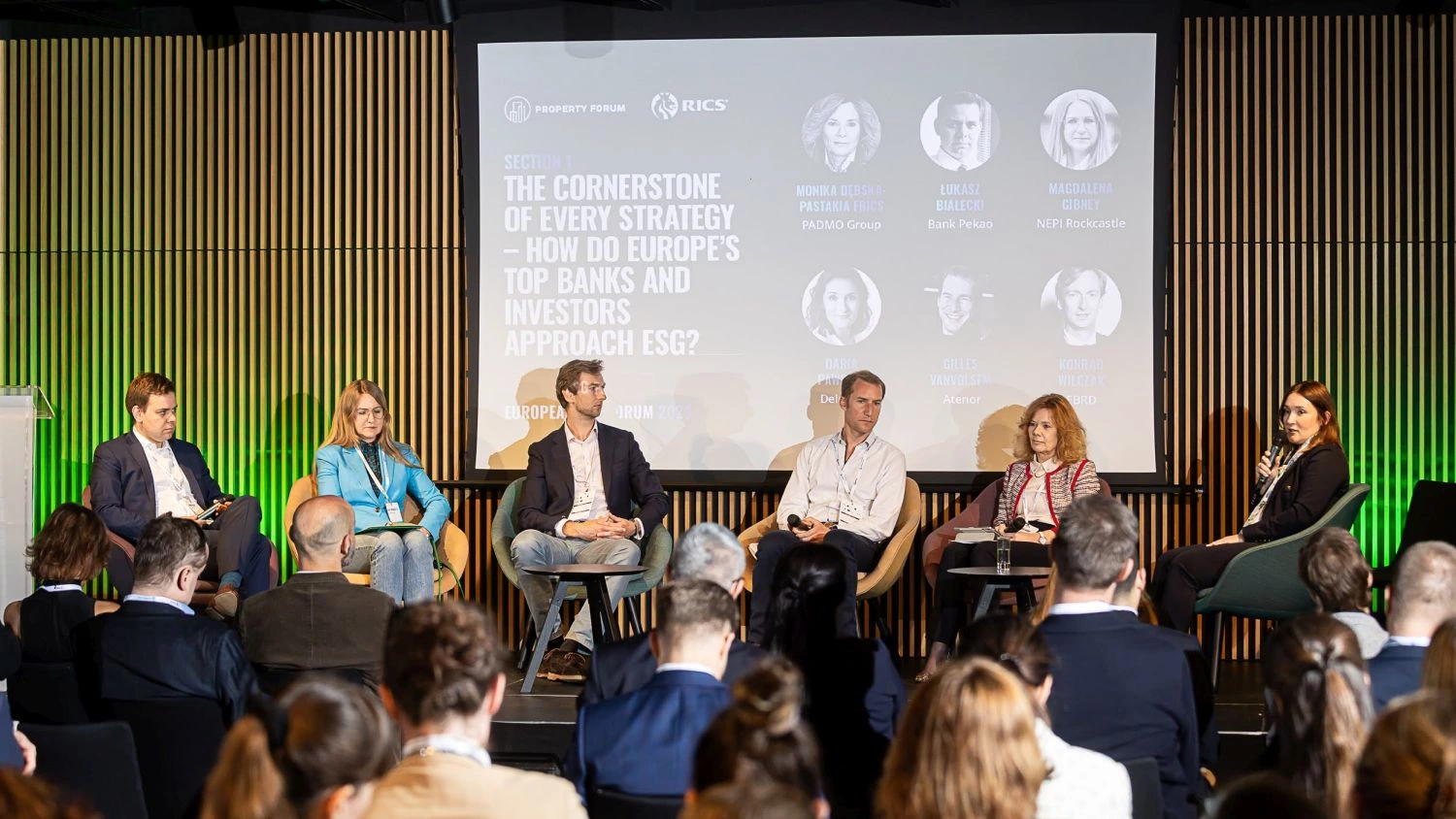
The opening panel of European ESG Property Forum 2023, which took place last week in Warsaw, has shown that the best stimulator to implement ESG strategies in the property market are always the financial and legal regulations.
The scope of the panel „The cornerstone of every strategy – How do Europe’s top banks and investors approach ESG?” was very extensive. Its moderator, Monika Dębska-Pastakia FRICS, Founder and Managing Partner of PADMO, started with the issue of the renovation wave. „We're looking at the renovation wave very closely because we know that over 80% of buildings in Europe will still be standing after the next 30 years. That’s 220 million buildings altogether, of which 35 million will have to be retrofitted and become energy efficient”, said Monika Dębska-Pastakia.
„Given the size of investment that is coming, we need to look at the innovation wave as an opportunity and a challenge at the same time. I think everyone recognizes the opportunity for the financing industry - there will be a lot of projects to be financed. At the same time, the challenge is that for many lenders, both commercial and development banks like ourselves, there is a visible preference towards greenfield - because that's easy, you can certify it, you have full visibility, etc. Renovation projects are not only more challenging from a construction perspective but also from a risk perspective. I think this is the change which needs to happen in order to attract commercial lenders to renovate – so far we've seen very few examples in Poland”, replied Konrad Wilczak, Associate Director and Senior Banker at EBRD.
For now, the renovation is taking place at a very slow pace of about 1% of the total stock per annum. Looking at the legislation of green taxonomy, how do banks actually implement the taxonomy requirements in relation to their property loan portfolios? „Honestly speaking, sooner or later, taking into account the EU regulations, these portfolios will have to be made greener. In terms of lending, this means that we will have more focus on green than non-green assets. For example, if you have a green building, you will have five offers from banks to finance it. If you have an old asset, maybe you have to stick with your current lender because nobody wants to take this problem on his shoulder”, commented Łukasz Białecki, Head of Real Estate Financing at Bank Pekao.
When speaking of ESG strategies, the discussions usually revolve around the first letter in this acronym. Does it mean that the other two are considered less important by financial entities? „I think in real estate, we focus too much on the ‘E’ element, mostly because of the popularity of building certification. But ’G’ currently is so much more than that - building certificates are not enough. We live in a totally different world with unprecedented levels of regulatory frameworks. And all elements - Environmental, Social and Governance - are equally crucial. Speaking of environment, I assume it's the most obvious one, because it's about energy efficiency, calculating the carbon footprint and designing decarbonisation paths on the asset level. And probably it's less obvious in social and governance areas. But also taxonomy addresses the minimum safeguards, which is about complying with the social elements along the value chains. The taxonomy, CSRD and European sustainability reporting standards will require a massive amount of disclosure on transparent governance and will require companies not only to create policies but actually to incorporate ESG in all processes”, predicts Daria Pawełko, Senior Manager, Sustainability Consulting - Central Europe at Deloitte.
How does a successful ESG strategy look in practice? According to Magdalena Gibney, Group Head of Sustainability at NEPI Rockcastle, a successful implementation starts with data collection. „I have the pleasure to represent a company that has 59 assets across nine different countries. So we are really facing nine different jurisdictions and nine different financing processes. Because we are a listed company, we have been reporting transparently for the last few years. And a big part of this journey is data collection. Basically, we are collecting all our data related to the efficiency of our buildings and we analyze it thoroughly. Based on these analytics, we prepare our investment strategy. For the communities that we operate with women, we have also decided to invest in the production of our own renewable source of energy - we have commenced the project of installation of PV panels in our Romanian portfolio, which we want to complete by the end of this year. We invest in biodiversity and better communities around our shopping centres. Our big Circular Economy-related project is proper waste management. Our ambitious target is to achieve zero waste levels by 2025. In order to do so, we actually need our stakeholders like the tenants to come on the same journey as us”, said Gibney.



